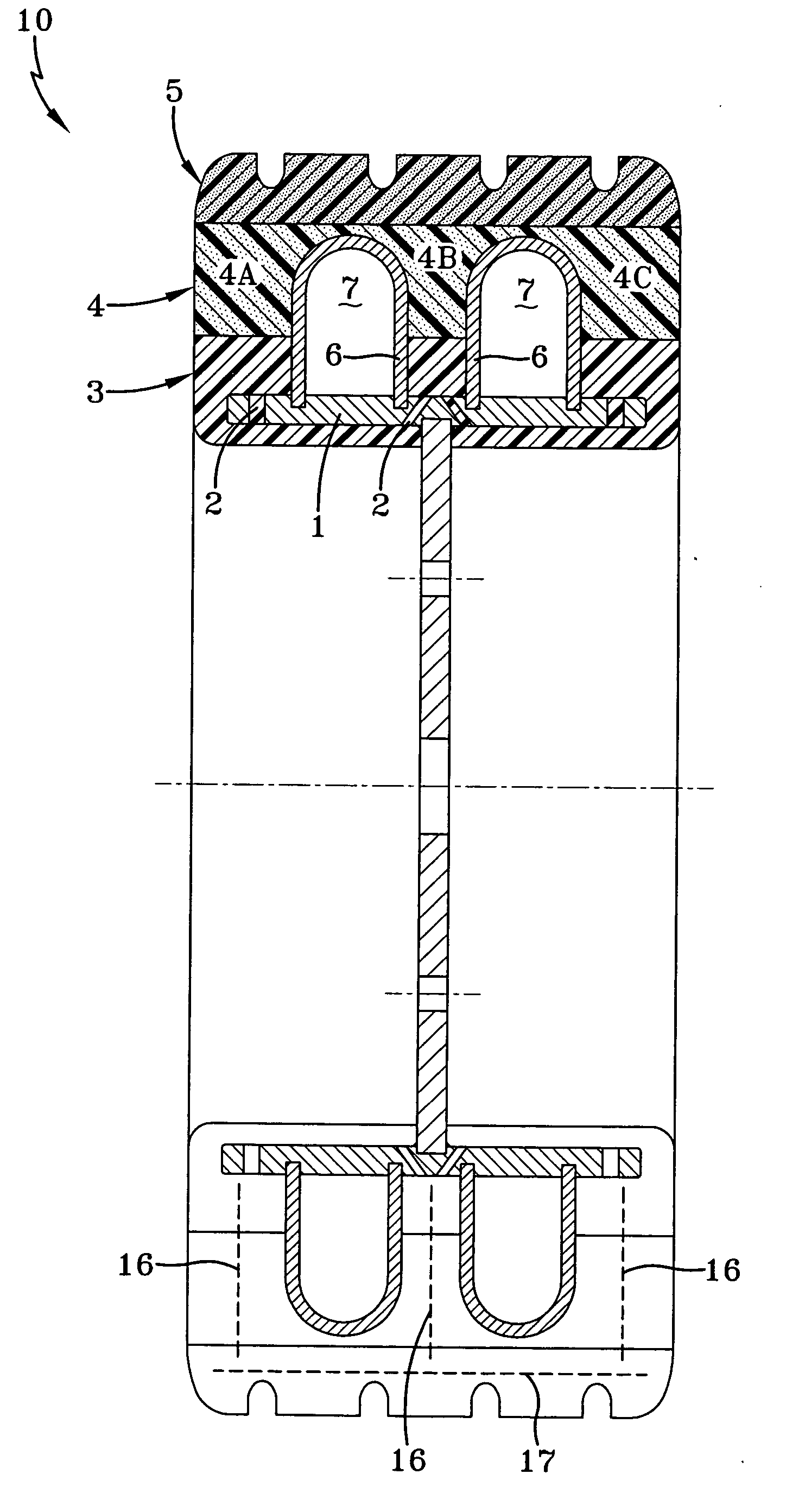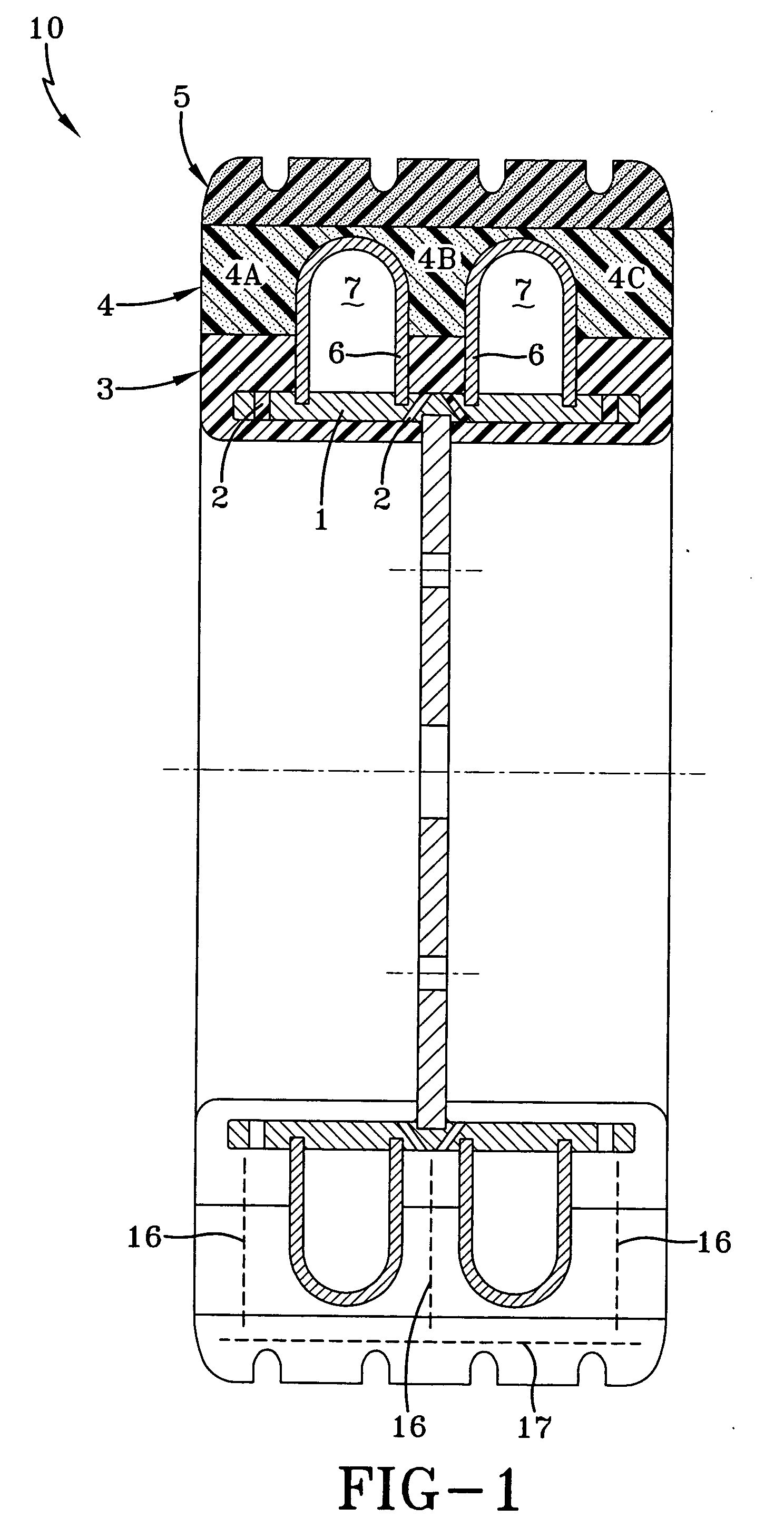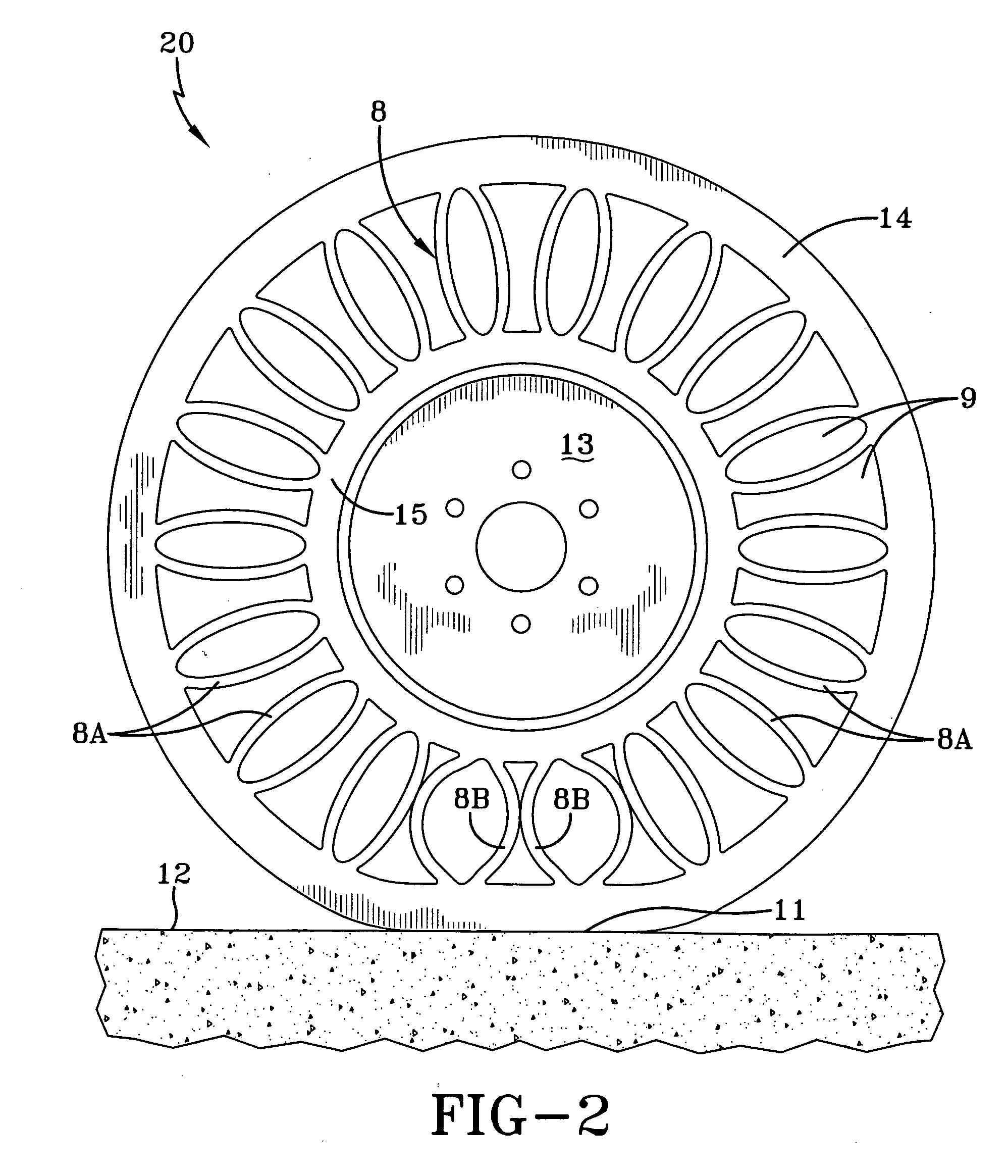Airless tire
a technology of airless tires and air pockets, which is applied in the direction of tyre parts, wheel attachments, transportation and packaging, etc., can solve the problems of high hysteria, the durability of run flat tires is usually limited by heat buildup, and the tire is not acceptable for most higher, so as to improve the durability of the connection and achieve high internal inflation pressure
- Summary
- Abstract
- Description
- Claims
- Application Information
AI Technical Summary
Benefits of technology
Problems solved by technology
Method used
Image
Examples
Embodiment Construction
[0022] Although there are many designs within the scope of this patent, two preferred embodiments will be described.
[0023] The first design utilizes circumferential ribs of elastomer to support the load. The ribs are connected at the outer diameter by an elastomeric band forming the tread area of the tire. There are at least three circumferential ribs supporting the load; one forming the outboard sidewall, one forming the inboard sidewall, and at least one supporting the tread band. Additional interior circumferential ribs can be used to support the center area of the tread. The ribs forming the outboard and inboard sidewalls are attached to the wheel. The interior ribs can be attached to the wheel or not attached to the wheel. The interior ribs may be designed not to touch the wheel during light loading but to contact the wheel as load is increased for additional load capacity.
[0024] The second preferred design has no circumferential ribs but uses radially oriented columns to sup...
PUM
 Login to View More
Login to View More Abstract
Description
Claims
Application Information
 Login to View More
Login to View More - R&D
- Intellectual Property
- Life Sciences
- Materials
- Tech Scout
- Unparalleled Data Quality
- Higher Quality Content
- 60% Fewer Hallucinations
Browse by: Latest US Patents, China's latest patents, Technical Efficacy Thesaurus, Application Domain, Technology Topic, Popular Technical Reports.
© 2025 PatSnap. All rights reserved.Legal|Privacy policy|Modern Slavery Act Transparency Statement|Sitemap|About US| Contact US: help@patsnap.com



